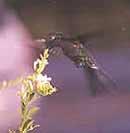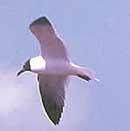Tropical Birds
The Great Admiral, amazed by the astonishing flora and fauna of the region became, without being his purpose, the major chronicler of what the Cuban writer Alejo Carpentier defined as the "marvelous reality" of the Americas. To know some of these birds, their characteristics and habits, origin and development, past and present, is the aim of this approach to one of the most interesting and few known pages of the Antillean nature. Let's start this imaginary excursion around the Caribbean airs.
Symbol and Pride In the forests of the Cuban territory, in beautiful landscapes of thick vegetation inhabits one of the most singular and attractive birds of the fauna of the archipelago. The tocororo, an endemic specie, the unique privilege of this land, regarded as the national bird of the largest of the Antilles. The exclusive design of its feathers, encompasses a wide range of shades which harmonically dress their bodies. The colors of the Cuban flag¾red, blue and white¾are perfectly integrated with green, gray, black, violet colors with metallic reflections that are mixed with a shining and endless spectrum.
The Paradise of Doves Santiago was the first name by which the island of Jamaica was known and this island that makes up the Greater Antilles not only is identified by its beautiful and coveted beaches, but is also regarded as a paradise of several endemic birds as the dove of the ring-shaped tail and the blue dove. Columba caribaea, the first one of these doves, is a bird of large size. It is identified by a black strip that goes all over the upward part of the tail and its common name is derived from this characteristic.
It is abundant all over the island, but the dove of the ring-shaped tail is more frequent in Cockpit Country and in the Blue Mountains. The blue dove (Geotrygon versicolor) also inhabits in the same areas of the dove of the ring-shaped tail. However, differently from the latter, the blue dove has its habitat in the humid forest of the limestone mountains and forages its food in the forest at the ground level and along the trails. The dove of the ring-shaped tail and the blue dove are two samples of the catalogue that Jamaica can exhibit. They are true representatives of the birds that contribute to enrich this island, caressed by the warm waters of the Caribbean.
A Gift for the Senses It is said that the island of Trinidad, a former British possession, is famous for its colonies of nests. Though in reality, they are also found along the coasts from Venezuela to Brazil, as well as in Grenada, and occasionally in Cuba, Jamaica and Dominica. The name is derived from its colorful feathers that end in some black spots in the tips of the wings. Another characteristic feature is its long curved beak, an essential instrument that helps the bird to procure its food.
A Privilege of Puerto Rico The woodpecker (Melanerpes portoricensis), is an endemic bird of Puerto Rico, capable to emit several sounds, but the most common one is that wek, wek-wek-wek, wek-wek; it's found from all over the coastal plantations to the mountain forests, fundamentally in small hills where coffee grows. The woodpecker of this island measures from 23 to 27 cm. They are birds easily identified for its costume.
A Live Treasure To see and listen a cerveral ferminia is one of the privileges that fills man with pride. All the inhabitants of the planet interested in knowing the attributes of one of the birds that sings the most splendid trills all over Cuba, should find it in a secluded area of the Ciénaga de Zapata in the province of Matanzas, Cuba. It can only be compared with the melodious trills of nightingales and mockingbirds. Those who have attended their magnificent concerts do not doubt in classifying their trills as a feast that recalls the musical canaries.
A Rare Ability in the Air The observation of its movement in forest, plains and even in the cities is like attending a performance of the best acrobat, because the zunzunes are the only birds that achieve to fly without moving their bodies, with the vertiginous movements of their wings, plus the rare privilege of flying in backward motion on occasions. The Chlorostilbon ricordii, are common birds of the Caribbean area, they are known by several names: zumbadorcito, zunzún, chupaflor, chupamiel, picaflor, colibrí, zunzuncito...
A Trespasser Bird Hispaniola was the name of this island, also inserted in the waters of the Caribbean from long time ago. The Dominican Republic and Haiti are the two countries that share this fertile and beautiful land. And also a very special bird inhabits this area which freely moves all over the territory: the cigua amarilla, as is known in the Dominican Republic, while in Haiti is termed moundélé. It measures 16.5 cm and is an endemic bird of this island
Talker- Birds as Ambassadors Its recognized fame was such that in an area of the archipelago, where it is abundant, the place was known in other times by its name, I'm referring to the Isle of Parrots¾today known as the Isle of Youth¾and this bird undoubtedly from the Psittacidae family can also be found in the Antilles and South America. Its fame is due, in the first place, to its ability to repeat what it hears from man.
For a Better Destination Only some years ago in 1998, St. Vincent parrot (Amazona guildingii) accounted to just 500 birds and thanks to the protective measures taken in recent times by the authorities of the island, the bird has lightly raised its population. This threatened specie, endemic of this island of the Lesser Antilles, measures between 41 and 46 cm and several elements make it different.
A Graceful Blaze Flamingos are indeed very beautiful birds, the sole presence of this bird is a view that bears no comparison, with its stylish shape, its bright red, this bird is usually found in the Caribbean islands; resulting in another gift granted by nature to mankind for several millennia. The indigenous birds of these lands, which belong to the genus Phoenicopterus, can be larger than 20 cm high and may exhibit the brightest feathers for the characteristic of their habitat and this is complemented with the wavy neck and long legs which grant these birds a seal of undoubted noble bearing.
Preserving the Jewels The Caribbean fauna also preserves many jewels. Thousand species live and nest in thick forests, steep mountains and muddy wetlands that with their songs, colors and habits enrich these lands, filled with prodigies.














































































